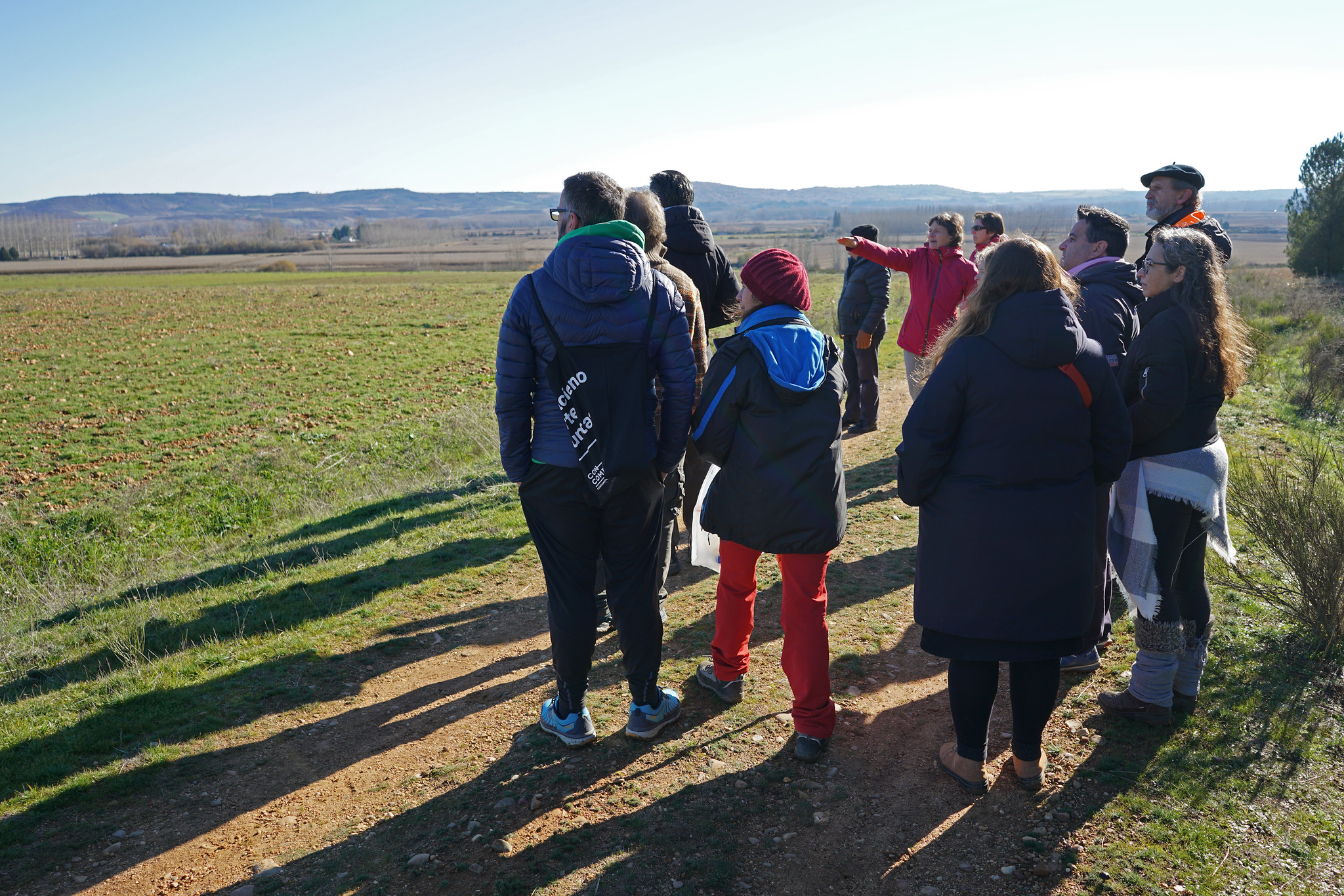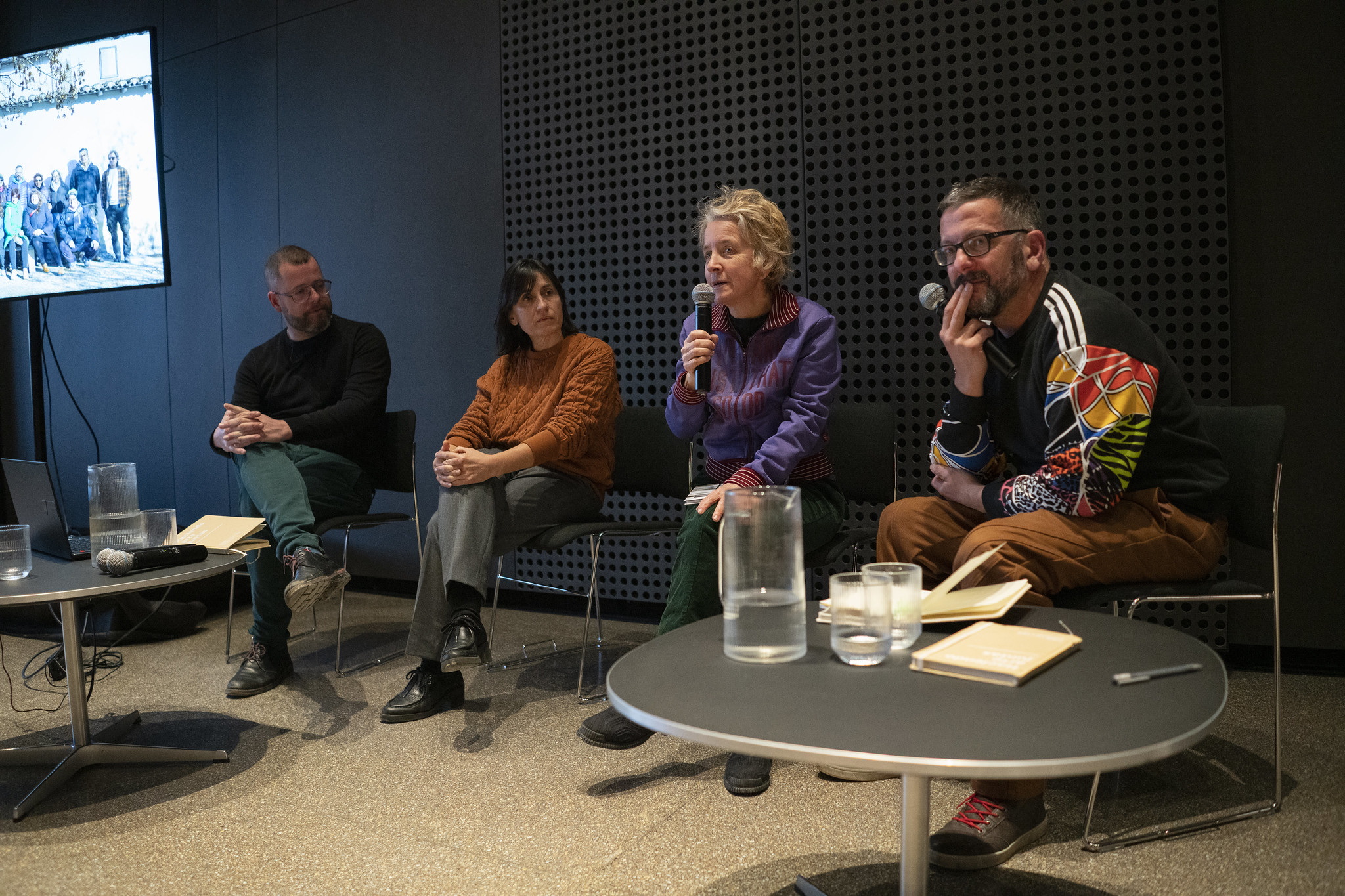"Mediation allows non-artists into the art world, providing a very 21st century vision"

Interview with the mediator of the Narrativas Solares project, which seeks a fair ecological transition in the province of León.
Alfredo Escapa Presa is an artist and researcher working in the live arts and collaborative AV fields, and the mediator of the Narrativas Solares project in his native region of León. In this conversation, he tells us how an ecological transition—a social process impacting on the local area—can be turned into participatory mediation that is open to listening and dialogue, with a view to creating an artwork in the form of an educational metaphor that contains lessons for the future.
Concomitentes (C): How did you get in touch with the citizens’ group when the Art for Sustainability call for proposals was announced?
Alfredo Escapa (AE): I’ve lived in the area for fourteen years, so I have strong ties to the region and what happens here affects me. When the plan to instal a solar farm first came up, I wanted to participate in some way but I didn’t see myself doing it through activism… I was already familiar with Concomitentes, so when I saw the Art for Sustainability call for proposals it seemed the ideal opportunity to stir things up.
C: How did you initiate that first contact?
AE: I told myself I wanted to start the project. Whether or not it worked out, it was a good opportunity to create something and to activate the platform. So I met up with three people from the group and everything flowed smoothly. It might have helped that I’m already well-known in the area. At first, I thought of connecting the project to other platforms, because there are more of these projects in the region: solar and also wind farms. But I think it’s more important to “territorize” the problem locally in processes like this, rather than expand.

C: What do you think about uniting the mechanisms of culture and art and the big issues of our time, such as sustainability, the ecological challenge, and climate change?
AE: It’s a bit tricky, because people usually interpret art as something separate from life. I love the Robert Filliou quote, “Art is what makes life more interesting than art.” That’s the position I’ve been working from for a long time in my creative processes, and I think that what we need to do in these times of emergency is work with people. Not “for” or “through” but “with people”.
The mediation process that I’ve been working on for the last few years—from this perspective of seeing people rather than doing social art—upends the way artists usually look at the world. And it allows non-artists into the art world, providing a very 21st century vision.
C: What are the main skills a mediator should have?
AE: The key skill is listening: not just listening with ears or eyes, but a kind of listening that has to do with physical evidence and involves the whole body. I also interpret it as a way of being, perhaps because of my performing arts background.
In anthropology there’s this notion of “participant observation”, but I’ve switched it around and I much prefer “observant participation”: so you’re participating, and simply by participating you’re observing and picking things up as part of this learning dialogue. I think listening is the key skill.
Then there’s another skill that I think is essential for a mediator, and I thought I had it, but I think I’m learning it through this Concomitancia: putting yourself “at the service of” something.
“I was already intellectually committed to it, but suddenly what was happening in this region that I’m connected to, and the friends that I’ve still got here, and this issue which I feel very strongly about: it became a very powerful motive to implement that idea of ‘putting myself at the service of’ and ‘disappearing a bit’”
C: What skills did you bring and what are you developing as you go along?
AE: I’m learning that the group is made up of people who know how to listen and dialogue. People from the rural world—and I include myself even though I don’t live in the village—are often accused of being closed-minded, but it’s actually the other way around. People who live in villages are used to engaging in dialogue because living in a village is a constant process of negotiation.
C: What spaces, methodologies and mediation strategies have been created over the years to encourage this reflection, research and exchange?
AE: The commented walk we did, where we actually put our feet on the ground that is going to be occupied by the solar panels, was a turning point for us. Before that we always met in a closed room, and we thought, “let’s go for a walk, even if it’s December, let’s go for a walk and see the site.”
And I think dialogue is turning out to be the main tool. For example, in the group there are people who are experts in ecological transition, university lecturers in biology and geology, activists and ecologists who have a lot of wisdom about these things. And there are also people who aren’t in any of those movements, but they have a lot of knowledge about this negotiation process, which cannot be “deterritorialized”.
C: Are you planning to introduce any new methodologies in the next phase of the project?
AE: The fundamental thing so far was the commented walk and the paradigm shift it brought about. And the main methodology has of course been “dialogue”, especially at the beginning, although we will soon embark on other ways of working.

C: How often do you come together each month?
AE: We have one or two meetings a month, no more than that because people are busy and also to convey this opportunity for reflection… Also, this Concomitancia is not unrelated to the events that are unfolding. A fortnight ago we held an emergency meeting in response to the Junta de Castilla y León pushing forward the installation of the solar panels. At the meeting we had to deal with that issue. Emergency time management can be tricky sometimes.
C: What do you think the mediation process contributes? What conclusions have you drawn from these exchanges?
AE: There has been a lot of learning on a technical level, such as terminology associated with photovoltaic platforms. And on a legal level too, since three of the citizen-commissioners are members of political parties and they’re always talking about it.
On a personal level, we’re seeing that there was a “relationship hijack” that went on for a long time. The pandemic was very negative, and this Concomitancia provides an opportunity to become aware of what really matters in life. In time and space, Narrativas Solares can add fuel to the fire. We’re only five kilometres from León, everything is very close.
C: What are the next steps for the project in the short and medium term?
AE: As winter comes to an end and spring starts, we have to make a series of important decisions: to agree on what we want, and to choose the artist or artists who will bring it into being. The methodology will be very focused on the one hand, but we also want to do other kinds of work, because there’s a lack of pedagogy around this whole issue.
“There’s no channel through which we can communicate with politicians about everything that’s going on, from a pedagogical perspective. So in early spring we’ll work on that, and we’ll finish after the summer or late in the year”
C: It’s difficult work that can't be completed in a few months…
AE: We’re thinking of expanding the project over time, beyond the Concomitancia and Concomitentes. In this ecological transition we’re not saying no to renewables, but we don’t want renewables in this way.
We’re considering setting up an energy community, and a series of other things that take time, a year is not enough. So we’re acting in the short and medium term, and expanding beyond that.
C: What are your thoughts on managing the expectations-frustrations of an artwork that can’t possibly provide a solution to the problem of the ecological transition?
AE: It's difficult to explain this “big issue” through art and an artwork, but I think it’s important to leave a trace so that other people can see themselves reflected in what’s going on here. This will continue into the future, it will keep going, it will spread to other areas, so I think the best way to approach it is to create something educational that can work for the future. Educational in the way I was talking about earlier, as a way of building up ways of thinking for the future.
